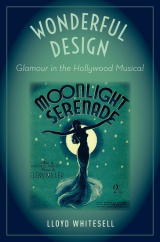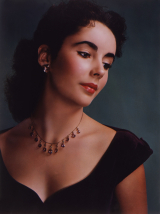Lloyd Whitesell has been on faculty at the Schulich School of Music for almost twenty years, and is also currently in the second year of his tenure as Associate Dean, Research and Administration. Fascinated with the connections between music and film, literature, and other mediums, his students over the years have enjoyed seminars on topics as wide ranging as Joni Mitchell, queer monsters, style in film music, and Bernard Herrmann (the composer known for his collaborations with director Alfred Hitchcock). He received a Schulich School of Music Teaching Award in 2011.
 The popular professor has just released a new book, Wonderful Design: Glamour in the Hollywood Musical, in which he explores the various elements that make film musicals glamorous. This is his second book published by Oxford University Press – The Music of Joni Mitchell was released in 2008.
The popular professor has just released a new book, Wonderful Design: Glamour in the Hollywood Musical, in which he explores the various elements that make film musicals glamorous. This is his second book published by Oxford University Press – The Music of Joni Mitchell was released in 2008.
Most of us will have seen a film musical at some point in our lives, possibly dating back to childhood – the likes of The Wizard of Oz, Grease, Chicago, 42nd Street, West Side Story, My Fair Lady, or even Gentlemen Prefer Blondes (featuring Marilyn Monroe's famous “Diamonds are a Girl’s Best Friend”). Whitesell talks about the way that film musicals often have visually extravagant décor, and the performances can be very stylized, involving seamless transitions into dance sequences. Viewers can escape into a world of beauty, elegance, romance, or even make-believe. Alluring personas are common in film musicals: the likes of Rita Hayworth, Marilyn Monroe, and Fred Astaire.
In Wonderful Design, Whitesell discusses what the definition of “glamour” is, and investigates the various techniques used by composers, arrangers, and song writers to create the illusion of glamour. With an academic approach, he leads the reader to layers that are much deeper than just visual cues of sequins, jewellery, and evening gloves, and analyses examples where musical orchestration helps to convey a sense of glamour.
Whitesell has categorized Hollywood musicals into what he calls “style modes,” based on a number of factors including music, staging, costumes, and lyrics. For example, "ordinary mode" occurs in musicals with simple costumes and music (think "Surrey with the Fringe on Top" from Oklahoma); "children's mode" can be found in bright numbers like "Ding Dong the Witch is Dead" from The Wizard of Oz; "razzle-dazzle mode" brings the sequins, flashy moves, and perhaps even "jazz hands" to light (including songs from Chicago, or the dance moves you may well know from "Greased Lightening" in Grease).
"Glamour mode" can be seen in this very elegant clip from Pal Joey (1957), with Rita Hayworth singing "Bewitched, Bothered and Bewildered":
Another gem of glamour is "It's Magic" from Romance on the High Seas (1948), with leading lights Doris Day and Nestor Amaral:
We asked author Lloyd Whitesell a few questions to find out more about how Wonderful Design adds to the existing literature:
What new approaches and research can readers enjoy in this book?
I’m the first to treat glamour as a sonic experience. This book develops a new theory of style modes (glamour being one), for the analysis of style design in film musicals. It also develops a new definition of the concept of glamour based on three core components (artifice, allure, enchantment). I’ve developed an original analytical framework for understanding glamour as a fusion of four aesthetic qualities (sensuousness, restraint, elevation, and sophistication). The book pursues a transsensory approach, using terms that apply across media (visual, sonic, tactile).
 What led you to exploring this topic?
What led you to exploring this topic?
I’ve done research on the importance of ultra-stylishness (style for its own sake) in classical music, particularly that of French composer Maurice Ravel. It can be a way of retreating from the world, expressing a superior attitude, or creating a transcendent space. Glamour is a way to do similar things in popular genres.
I also enjoyed shining a light on music arrangers and orchestrators in the film studios, the ones who transformed songs into spectacular routines. This meant traveling to Los Angeles and digging in the archives for music scores, many of which are now lost.
Why is this research important from a practical standpoint?
Because style is something we soak up in the background when we are viewing/listening, we aren’t always paying close attention. This means that it can affect us subconsciously and powerfully. I turn an analytical lens on these powerful unobtrusive effects.
Were there any findings that you found particularly surprising during your research?
One surprising thing was finding glamour in unexpected places: children’s films (Lady and the Tramp, Wizard of Oz), horror film (Sweeney Todd), and gritty realistic settings (West Side Story). Another was discovering deep religious symbolism in how glamorous stars are depicted.

Lloyd Whitesell's Wonderful Design: Glamour in the Hollywood Musical will have an official launch on campus, at 5pm on Friday 5 October in the Schulich School of Music's Marvin Duchow Music Library.


